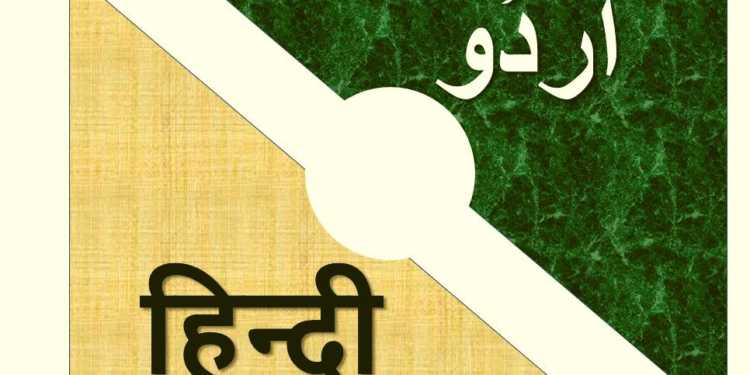
 Urdu belongs to the composite culture of India. Hindi and Urdu are supplementary and complementary. They are like sisters strengthening each other.
Urdu belongs to the composite culture of India. Hindi and Urdu are supplementary and complementary. They are like sisters strengthening each other.
Although Urdu had such a lasting impact on the Hindi language in the Bollywood film industry, its future does not seem to be bright.
By Nazarul Islam
Speaking two languages or more may seem a relative affluence, but more often it entails the problems of maintaining a second establishment even though your body can be in one place at a time. When I return to Bengali or Urdu, I feel shocked at my own neglect of a space so intimate to me: like relearning the proportions of a once-familiar room, it takes me by surprise to recollect that I need not feel grief, I can eat grief; that I need not bury my mother but instead can offer her into the earth, for I am in Urdu now….
Language is the essence and identity of culture and is a major tool for communication. To know your language is the best way to keep and preserve your culture. In recent times, the idea of linguistic and cultural awareness has increased, thus allowing, for example, regional languages to be more culturally accepted.
Language is very powerful and has the ability to change someone’s perspective. At a time when Bollywood movies are rapidly making their way into Western theatres, a cross-cultural experience is being defined.
Urdu, up until recently, enjoyed tremendous cultural prestige among educated Muslims and Hindus, as well as among other communities. It was among the very few literary languages for many of those who also wrote in Hindi.
For instance, Upendranath Ashk and Munshi Premchand were famous Urdu authors before they even began to write in Hindi.
Film is an effective art form to create social change and awareness among the masses. In terms of viewership and number of films produced, India is the hub of the largest film market in the world. It started nearly a century ago, and has since been extremely popular in India.
The language identified in the most Bollywood films is “Hindustani”, considered to be one label for the language of much of north and central South Asia. The actual spoken language of Hindi (occasionally referred to as “Hindustani”) is usually written in two scripts: Devanagari (an angular script associated with its Sanskrit heritage) and Nastaliq (cursive script based on the Arabic alphabet).
In fact, the language of Mumbai films tend to contain a large number of Persian and Arabic words and thus considered to be “Urdu” in a sense.
If a movie uses only Hindi or only Urdu, they would lose a large audience, so by utilizing Hindustani as the language of the films, Bollywood can capture a wider audience. However, this trend has been changing as the use of Urdu language in Hindi films is starting to decrease, despite its poetic appeal.
In the olden days, the song lyrics in classic Bollywood films such as Mahabharat and Ramayan used to contain lots of Urdu in them, but now, that is clearly starting to decline. Back in the late ‘90s or early 2000s, Hindi language films’ titles were typically shown in three languages: English, Hindi and Urdu.
However, nowadays, it appears that Urdu has become unfavorable with people in Bollywood as titles are now never shown in Urdu. Until recently, Hindi and Urdu were perceived as the sister languages by the media, but now, there’s a growing distinction between them.
When, Amitabh Bachchan, for example, hosted India’s version of “Who Wants to Be a Millionaire?” (Kaun Banega Crorepati), he spoke a relatively standardized version of Hindi with a solid mix of English which was gradually replaced by Sanskrit terms. The growing disparity between Hindi and Urdu is a result of national politics, first discussed back in 19th century British-controlled India. Even Mahatma Gandhi wrote in both Hindi and Urdu yet called them by the same name of Hindustani.
Despite its usage decline, it is impossible to deny the lasting impact Urdu has had on Hindi cinema. For example, in the Bollywood court proceedings, Urdu is quite prevalent in the legal representation within Hindi films. The terms such as ‘chasmdeed gawah’, ‘mujrim’, ‘quaidi’, ‘tazeerat-e-hind ke tahat’, ‘ba-izzat bari’, etc. are all instances of Urdu terms in the courtroom.
Urdu is also the language of choice for love, which is particularly important as this is the main theme in most Hindi movies. Lastly, Urdu also has a strong association with sophisticated poetry, which has significantly enhanced the vocabulary of countless Hindi films’ soundtrack.
With all this in mind, it’s a bit sad to realize gradual eradication of Urdu from Hindi cinema. Considering English (and occasionally Hindi) are the major players in business and governmental language, there’s no true incentive to make a concerted effort to learn Urdu script. This is most likely the reason why Bollywood has dropped the Urdu title.
One of the great scholars when it comes to Urdu language and literature, Gopi Chand Narang, was quoted as saying that, “Urdu is not the language of Muslims. If at all there is any language of Muslims, it should be Arabic.
Urdu belongs to the composite culture of India. Hindi and Urdu are supplementary and complementary. They are like sisters strengthening each other.”
Movies are a great way to represent language, societal norms, and customs and traditions. While some languages (like English) will continue to remain dynamic, for others (like Urdu), fate seems blinking. Although Urdu had such a lasting impact on the Hindi language in the Bollywood film industry, its future does not seem to be bright.
____________________
About the Author
